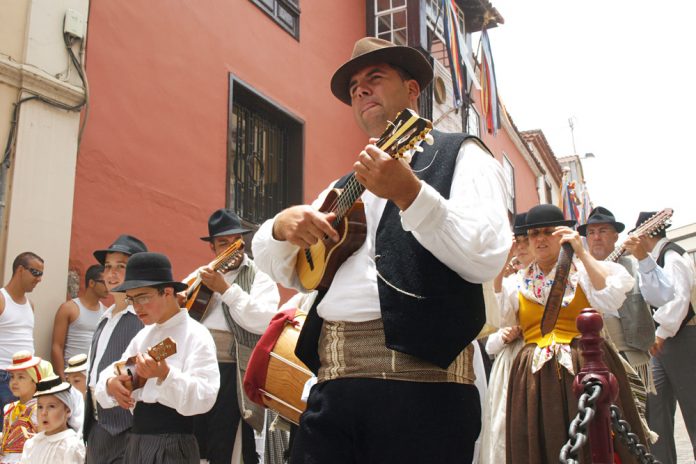“How about a timple?” I was asked by an earnest assistant in one of the traditional music shops in Las Palmas. I had just called in for a replacement violin string, and was looking at the range of Canarian traditional stringed instruments for sale.
I quickly realised that I was not being offered an early morning alcoholic drink, and that the young salesman, speaking in English, had discovered an amusing way to catch the attention of English-speaking visitors to the shop.
I have only recently begun to study early Canarian musical instruments, and as my first passion is the violin, this particular stringed instrument caught my eye, simply because of the beauty and simplicity of design.
The timple creates a voice by the instrumentalist plucking its strings in much the same way as the guitar, but there the similarity ends. It is much smaller than the guitar and usually has five strings, although in Tenerife some timples only have four strings.
The timple is mainly used to accompany Canarian folk music and has a loud and rather sharp voice. Due to the success and increasing popularity of this instrument, it has now reached the status of a solo instrument in some circles.
The name of the instrument still intrigues me and I have yet to find a definitive answer to the origin of its name. In line with my initial thought about an alcoholic drink, the timple did used to be called a tiple (with only one ‘p’); before that it was called a ‘camelito camelillo’ because the back of the instrument looks very much like the hump of a camel, although it is less than 40 centimetres in length.
Timples were created in the Nineteenth Century and played throughout the Canary Islands and much of South America. In many ways, they are related to the ukulele, the Spanish guitar and the Portuguese chavaquino.
Interestingly, the range of woods used is varied with the most common being pine for the body, ebony for the bridges, holy stick for the mast, and wood from the orange tree for decoration. Creation of these beautiful and interesting instruments was and still is a cottage industry across the islands, offering considerable variation in both design and construction.
The island of Lanzarote became the centre for the systematic making of these instruments where one of the last timple makers is about to retire after more than sixty years of timple making.
The Government of Lanzarote has recognised Antonio Lemes Herandez as artisan of the year for his involvement for more than half a century in the production of timples. Antonio, a craftsman from Teguise, has been building small timples since he was a child. As a child, he made them from cardboard and other materials before painting them.
He eventually perfected his technique and transformed a range of wood into his instruments, mostly pine, which he favours for timples since it can tune well. Over the years, Antonio has developed his own unique house style, which continues to delight players across the islands and across the world.
Sixty years after his first contact with the timple, Antonio’s hands continue to create his unique timples, although he now feels that it is time to retire.
There are many renowned timplistas, as timple players are referred to, playing classical music and jazz and it is often regarded as an alternative instrument of choice chosen by guitarists.
During the next fiesta, if you are fortunate enough to hear Canarian instrumentalists, do watch out for and listen carefully to the timple. I am sure that, like me, you will find it to be an engaging and fascinating instrument.
If you enjoyed this article, take a look at my websites: http://barriemahoney.com and http://thecanaryislander.com or read my latest book, ‘Living in Spain and the Canary Islands’ (ISBN: 9780995602724). Available in paperback, as well as Kindle editions.
Join me on Facebook: @barrie.mahoney
© Barrie Mahoney






Im english i have 3 timples..love em